The last month has been a busy one for the new wave and towing tank . Approximately 140 water tankers (bowsers in the correct parlance) came and went leaving behind 3000 tonnes of pure Otterbourne water. Carriage installation time lapse….
The first proper use of the wave makers occurred last week and they can create some large waves which is very exciting. We are hoping to demonstrate these at the next University open days at the end of this week all day on Friday 3rd and Saturday 4th. We are very keen to promote our ship science degree programmes to prospective students so please feel free to let friends and family know of this opportunity.
We are doing regular tours of the new tank, talks about ship science, tours of our new building (B176)and its new labs as well as the

Faculty Design Show in B177. The new tank is in B185, all on the new Boldrewood campus co-located with Lloyd’s Register’s Global Technology Centre. Just pop in and have a chat with the staff and students around.
As usual in a small discipline we find it difficult to get the message out about the fascinating careers and excellent salaries to hard pressed schools and their students so any help our friends can do in this respect is much appreciated. The next Open day opportunity is in early September.
We are more than happy for members of staff to visit schools to give talks or for a school group to visit us. Please contact our admissions teams, led by Dr Dominic Taunton, if you would like to discuss these opportunities.
MARINE2015 in Rome

This year the 6th International Conference on Marine Engineering was held in Rome. The conference spanned three days with three parallel sessions, aiming to bring together scientists working on computational methods for maritime engineering. Presentations came from various backgrounds, including naval architecture, offshore engineering, coastal engineering, renewable energy, underwater structural engineering and fish farming. Most attendees were from a computational fluid dynamics background, though with a great variety of methodologies. Whilst viscous-flow finite volume codes were the most represented, there were interesting results from smooth particle hydrodynamics and Lattice-Boltzman methods. There were several plenary lectures which focused on fluid-structure interactions and complex viscous modelling of bubbly flows and breaking waves.
Across all fields and methodologies there were some similar themes. Accurate viscous modelling, adaptive mesh technologies and hardware-software interaction were key topics throughout. In naval architecture, much of the discussion was focused on accurate manoeuvring simulations in waves, design & optimization and the use of advanced turbulence modelling.
The University of Southampton had two attendees: Ameen Bassam presented on “Ship Voyage Energy Efficiency Assessment Using Ship Simulators” and James Hawkes presented on “Chaotic Linear Equation-System Solvers for Unsteady CFD”.
The next MARINE conference will be held in Nantes, France, in 2017. Full papers from this year can be downloaded from:
http://congress.cimne.com/marine2015
Working harder to swim faster
Marion James, a FSI PhD student based in our Performance Sports Engineering Laboratory (PSEL) at the University of Southampton while on holiday in the USA last month was pleased to see the outcome of some performance testing undertaken awhile ba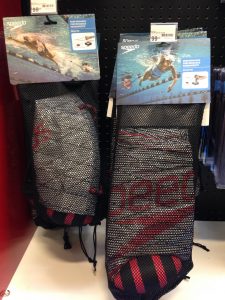
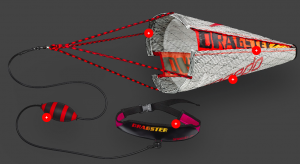
 ck in the University of Southampton Jubilee Pool. She commented, ‘Speedo USA asked us to drag-test and evaluate the performances of several products to support the training programme of high-level swimmers, and especially sprinters. As a result, two products ‘Dragster’ and ‘Dragtini’ are now available on the US market. They act as a parachute to increase the swimmer’s drag during a training session in order to provide higher intensity training and power-up swimming performances.
ck in the University of Southampton Jubilee Pool. She commented, ‘Speedo USA asked us to drag-test and evaluate the performances of several products to support the training programme of high-level swimmers, and especially sprinters. As a result, two products ‘Dragster’ and ‘Dragtini’ are now available on the US market. They act as a parachute to increase the swimmer’s drag during a training session in order to provide higher intensity training and power-up swimming performances.
PSEL has been looking into swimming drag over the last six years. A recent paper in Journal of Sports Engineering and Technology by lead author Angus Webb looks at how repeatable techniques are for measuring a swimmer’s resistance when towed passively
Tow Tank Carriage installation underway
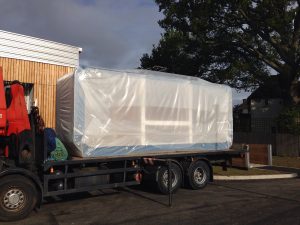
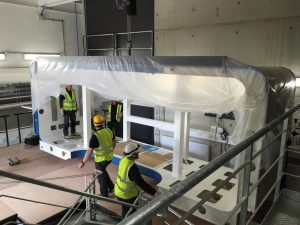
Progress has gone well since the hand over of the new fluids laboratory building from the main contractors in early March. The passive beach at the east end has been installed along with the active side beaches on the south wall. The components of the main carriage started arriving this morning and should be assembled over the next two weeks.
1st June is scheduled for the start of tank fill with a cautious process with 3000 tonnes of water required. This gives a week for us to prepare demonstrations using the wavemakers for the university open day on the 3rd and 4th July. We are looking forward to showing visitors around as well as making a start on a number of research projects.
We are delighted to announce that our Towing tank manager, Bertrand Malas has now started work and will be delighted to discuss future use of the facility as progressively more of its capabilities become available.
BRIDGES – Underwater Glider Project takes off
Prof Stephen Turnock and Dr Jon Downes from the Maritime Robotics Lab attended the kick off meeting of the EUH2020 projects BRIDGES in Paris recently. This 4 year, 8Meuro project aims to develop two deep water gliders.
Autonomous underwater gliders use a device, similar to a fish’s swim bladder to alter their buoyancy and glide on wings either upwards or downward depending on whether they are lighter or heavier than water. They are very energy efficient and can carry out tasks that last for months and can travel large distances.
A video gives an overview of the project by one of the 19 project partners Armines. The University of Southampton’s work will concentrate on the hydrodynamic design of the external shape of the hull and an auxiliary hybrid propeller for seabed survey at depth. This builds on our expertise in CFD and testing of AUVs such as Delphin2 using wind tunnels and towing tanks.
Southampton in USA for Lloyds Register Foundation Resilience Engineering Workshop
 Professor Ajit Shenoi attended a Lloyds Register Foundation (LRF) workshop on Resilience Engineering held at the Stevens Institute of Technology, New Jersey, USA between 15 and 17 April. The proceedings of the workshop will inform the policy document for LRF to shape funding calls for their strategic priority on resilience.
Professor Ajit Shenoi attended a Lloyds Register Foundation (LRF) workshop on Resilience Engineering held at the Stevens Institute of Technology, New Jersey, USA between 15 and 17 April. The proceedings of the workshop will inform the policy document for LRF to shape funding calls for their strategic priority on resilience.
LRF is a registered charity in the UK whose mission is “to secure for the benefit of the community high technical standards of design, manufacture, construction, maintenance, operation and performance for the purpose of enhancing the safety of life and property at sea and on land and in the air”.
About 60 people from universities, research institutes, industrial entities, charities and government departments attended this event.
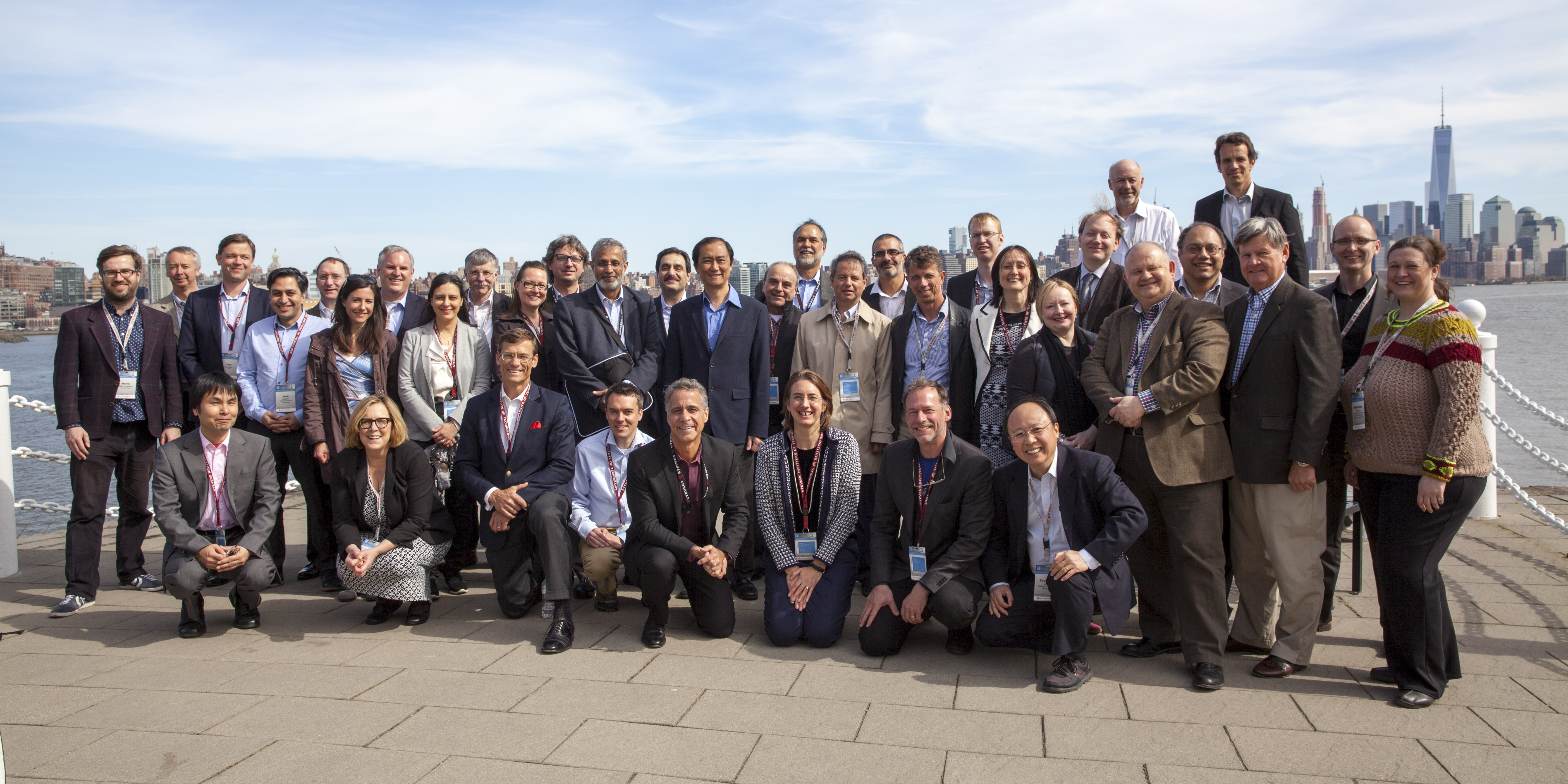
The discipline specialisations of the attendees spanned policy/economics, politics, various engineering specialisations (transport, civil infrastructure, offshore, etc.), medicine, environmental and other sciences, etc. The Southampton Marine and Maritime Institute (SMMI), in partnership with National University of Singapore and University of Western Australia, promoted the case for understanding resilience of the maritime infrastructural system (comprising the physical assets and the people/organisations who work in those environments) and the significant human population that depends crucially on the oceans for food, energy and other essential resources.
Understanding of Fluid Dynamic Problems: CFD, Model tests and full scale measurements
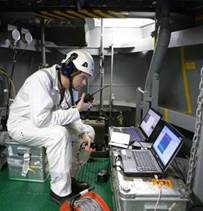 Date: Thursday, 30/4/2015
Date: Thursday, 30/4/2015
Room: Boldrewood Campus B176 Room 2013
Time: 14:00-15:00
Dr Dmitriy Ponkratov Senior Consultant at LR will be presenting this interesting LR/SMMI
Abstract
Despite of the fact that full scale measurements look like the most realistic, there are a lot uncertainties (hull roughness, wind, waves, current, water depth) which may affect the results. Moreover, they are usually scarce and even when available they are incomplete for validation purposes. Model tests can help to avoid these uncertainties as it is possible to simulate pure calm conditions in towing tank. However, the results can be again not realistic because of the scale effect. CFD has a possibility to calculate ships in full scale avoiding any scaling problems, but the numerical methods should be carefully validated, ideally against full scale measurements. So It can be concluded that only investigations in all three directions can help to better understand the fluid dynamic problems.
Biography
Dr. Dmitriy Ponkratov graduated the Saint-Petersburg State Marine Technical University, Russia in 2005. While writing his PhD thesis in 2006-2008, he was a Consultant to Marine Technology Research Institute in Norway and Ship Scientific Research Centre in China. Prior joining Lloyd’s Register he was an Associate Professor in Norway. Currently he holds the position of Senior Consultant at Lloyd’s Register, Technical Investigation Department, Southampton, UK. He is responsible for managing various Fluid Dynamic projects such as Computational Fluid Dynamic (CFD) investigations, model tests attendance, sea trials attendance, full scale cavitation observations, under water propeller inspections etc. He is a member of Royal Institution of Naval Architects, member of Technical Committee of International Society of Offshore and Polar Engineers and Chartered Engineer.
A* IHPC /SMMI Lab to feature in Singapore promotion video
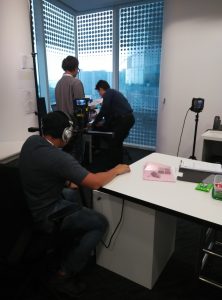
Two FSI members of staff, Dr’s Nick Townsend and Adam Sobey were present during the filming. Celsius Tan the Executive Assistant from IHPC – SMMI Joint Lab reports that on the 17th March 2015, IHPC – SMMI Joint Lab venue was chosen to be part of a short video by A*STAR Corporate Communications to showcase the significance of the marine sector for Singapore’s economy, and the importance of R&D in the shipping industry. A*STAR Corporate Communications notes that the film.
The film will take a narrative approach that is inspired by movie trailers. This allows us to move quickly through a topic, with sequences which can be highly stylized and exciting. This video will have a slightly grander scope, looking at location shooting in the research labs as well as at a shipyard.
The following points will be brought into the script mix, adding the educational and emotional content to the story:
- Singapore is a seafaring nation
- Partnerships and collaborations are important to research
- Rising costs and competition mean that ships will have to be more efficient as well as durable. At the end of a ship’s lifespan scrapping has great environmental and human cost
- The marine sector is a significant engine of Singapore’s economy.
Outreach to potential ship scientists
PhD student Marion James and Part 2 Ship Science student Michael Beckett spent an enjoyable morning with Year 9 pupils at Alton Convent School illustrating some of the exciting opportunities that engineering presents. A design challenge based on sports equipment allowed the girls to appreciate quite how complex some of the choices faced by engineers are and the opportunities for creativity and innovation to complement analysis.
Fiona Hopkinson who coordinated the event from the school wrote afterwards
‘Many thanks again for your support in providing two such outstanding ambassadors for Southampton University… Attending the event were 20 gifted and talented scientists from two local schools, and all of our Year 9 students, 67 pupils in total. Research indicates that the ‘leaky pipeline’ for female scientists becomes apparent at A-level, however the decision has typically been made by 14 – hence the timing and target age group of the event. Our objective was to make the students aware of the many exciting and diverse opportunities opened by the pursuit of science, and the ability to combine engineering with other passions such as sport.
Your speakers were everything we could have hoped for and more – young, dynamic, fun and personable exceptionally high achievers. Thank you!’
We were able to provide support at quite short notice to this IMechE sponsored event during Science Engineering and Technology(SET) week. As a group we welcome approaches from organisations who would like to find out more about ship science, maritime engineering and the many opportunities it presents. We are happy to discuss possible outreach activities, ideally the more interactive the better and especially to groups currently underrepresented in the industry.
Arctic Scenarios – Opportunities and Challenges 23/4/15 12:30 room 1025/B175
Professor Fai Cheng, Head of Strategic Research and Technology Policy, Lloyd’s Register will be presenting on the challenges presented by the Arctic. ALL ARE WELCOME
Synopsis:
Those monitoring the effects of climate change agree that the pace of environmental transformation currently taking place in the Arctic is unprecedented. Such changes provide opportunities for business in areas as diverse as energy extraction, shipping and tourism. But these opportunities will only be fully realised if the businesses involved are able to manage the substantial, and unique, risks which exist in the region. There will be winners and losers as the impacts of climate change continue to shape the Arctic future. There is significant level of uncertainty about the Arctic‘s future, both technologically, environmentally and economically. The lecture aims to highlight the opportunities and challenges associated with different possible scenarios with particular emphasis on technical challenges.
